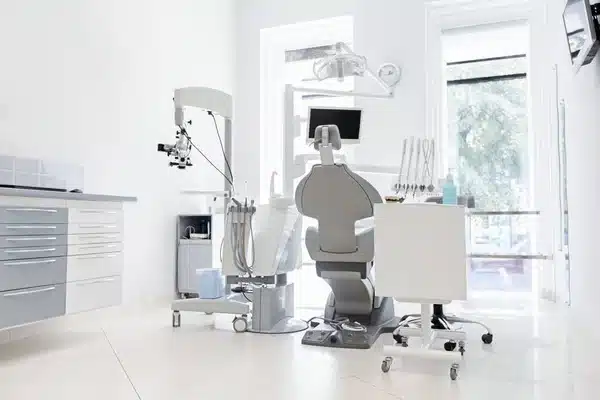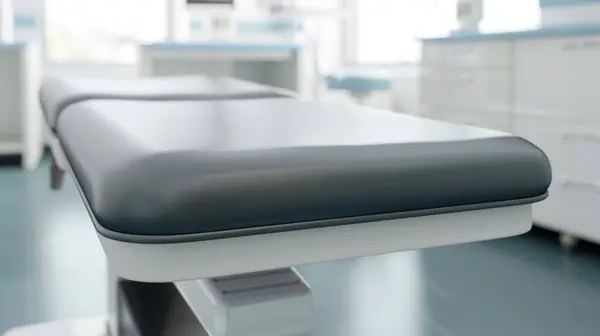Medical furniture—such as hospital beds, examination tables, patient chairs, and other healthcare furnishings—plays a critical role in providing comfort and safety in healthcare facilities. As demand for high-quality and affordable medical furniture grows, many buyers are turning to China, a leading global manufacturing hub, for sourcing these items.
Importing medical furniture from China can be a cost-effective solution, but the process involves navigating supplier selection, shipping logistics, customs regulations, and more. In this comprehensive guide, we will outline all the essential steps to successfully ship medical furniture from China, from selecting a reliable supplier to arranging safe delivery to your destination.

Table of Contents
Understanding the Medical Furniture Market in China
Why Source Medical Furniture from China?
China is one of the world’s largest exporters of medical furniture, providing buyers with a wide range of products at competitive prices. Manufacturers in China can produce everything from basic hospital beds to specialized ICU beds, examination tables, and other essential furniture for medical use. The benefits of sourcing from China include:
Affordability: Competitive prices driven by efficient manufacturing practices.
Customization: Many manufacturers can customize medical furniture based on your specifications, such as size, material, or added features.
Quality: With the advancement of technology and better quality control, many Chinese manufacturers now offer high-quality products that comply with international standards.
Types of Medical Furniture Available
Medical furniture imported from China includes:
Hospital Beds: Standard beds, ICU beds, pediatric beds, electric beds, etc.
Examination Tables: Manual and electric examination tables for clinics and hospitals.
Patient Chairs: Reclining chairs, chemotherapy chairs, and dialysis chairs.
Medical Cabinets and Carts: Storage cabinets, treatment carts, and bedside tables.

Finding Reliable Suppliers
Identifying Reliable Manufacturers
The first step in importing medical furniture is finding the right supplier. Here are some approaches to finding reliable manufacturers:
Online Platforms: Platforms like Alibaba, Made-in-China, and Global Sources provide access to a large number of manufacturers. Look for verified suppliers with positive ratings.
Industry Trade Shows: Attend industry-specific trade shows, such as the China International Medical Equipment Fair (CMEF), to meet suppliers in person and evaluate their products.
Supplier Verification: Verify suppliers by checking certifications like ISO 13485 (Medical Device Quality Management Systems) and CE marking to ensure compliance with medical standards.
Building a Strong Relationship with Suppliers
Building a trustworthy relationship with your supplier is crucial for the success of your importing process. Consider these steps:
Request Product Samples: Request samples to assess the quality of the furniture before placing a large order.
Factory Visits: If possible, visit the factory to evaluate the production process, quality control measures, and overall reliability.
Clear Communication: Maintain open and consistent communication regarding product requirements, delivery timelines, and any customizations.
Negotiating Trade Terms and Placing an Order
Choosing the Right Incoterms
Incoterms are international terms that define the responsibilities of the buyer and seller in shipping transactions. Common Incoterms used in importing medical furniture include:
FOB (Free On Board): The supplier handles transportation to the port of origin, and the buyer is responsible for shipping and other subsequent costs.
CIF (Cost, Insurance, and Freight): The supplier covers the cost of shipping and insurance to your destination port.
DDP (Delivered Duty Paid): The supplier takes care of everything, including customs duties, until delivery to your warehouse.
Payment Methods
Choose a secure payment method that works for both parties. Common payment options include:
Bank Transfer (T/T): A popular method that usually requires a deposit before production and the remaining balance before shipment.
Letter of Credit (L/C): This provides additional security for larger orders, as payment is only made once certain conditions are met.
Shipping Methods for Medical Furniture from China
Medical furniture, such as hospital beds, examination tables, and cabinets, requires careful planning for shipping due to its size, weight, and often delicate nature. Choosing the right shipping method ensures timely delivery and maintains the quality of the products. Here’s a detailed overview of the shipping methods available for medical furniture from China:
Sea Freight
When to Use:
Sea freight is the most cost-effective option for bulk shipments of medical furniture. It is ideal for large or heavy items that are not time-sensitive.
Key Features:
- Full Container Load (FCL): Best for high-volume orders where an entire container is utilized. A 20-foot container can hold around 28 cubic meters, while a 40-foot container holds approximately 58 cubic meters.
- Less-than-Container Load (LCL): Suitable for smaller shipments that don’t require a full container. The goods are consolidated with other shipments, reducing costs.
Transit Time:
- 20–45 days, depending on the shipping route.
Advantages:
- Cost-effective for large volumes.
- Suitable for heavy and oversized items.
Considerations:
- Longer transit times compared to other methods.
- Requires proper packaging to avoid damage during handling.
Air Freight
When to Use:
Air freight is ideal for urgent shipments or high-value medical furniture where speed is a priority.
Key Features:
- Consolidated Air Freight: Goods are combined with other shipments to reduce costs.
- Direct Air Freight: Fastest option for critical deliveries.
Transit Time:
- 3–7 days.
Advantages:
- Quick and reliable for time-sensitive shipments.
- Minimal handling reduces the risk of damage.
Considerations:
- Higher costs compared to sea or rail freight.
- Weight and volume restrictions apply.
Rail Freight
When to Use:
Rail freight is a cost-effective alternative to air freight for shipments to European destinations.
Key Features:
- Ideal for moderately heavy shipments.
- Balanced transit time and cost.
Transit Time:
- 15–25 days to major European hubs.
Advantages:
- Faster than sea freight for European destinations.
- Reliable and eco-friendly option.
Considerations:
- Limited to certain regions.
- Requires intermodal transport for last-mile delivery.
Door-to-Door Shipping
When to Use:
Door-to-door shipping is a comprehensive solution where the logistics provider handles the entire process, from pick-up at the factory to delivery at the final destination.
Key Features:
- Combines sea, air, or rail freight with last-mile delivery.
- Simplifies customs clearance and documentation.
Estimated Costs:
- Depends on the combination of shipping methods and distance.
Transit Time:
- Varies based on the selected freight method and destination.
Advantages:
- Hassle-free for the buyer.
- Ideal for businesses new to international shipping.
Considerations:
- Costs may be higher due to the inclusion of multiple services.

Choosing the Right Shipping Method
The choice of shipping method depends on several factors:
- Order Volume: Large orders benefit from sea freight, while small or urgent shipments may require air freight.
- Budget: Sea freight offers cost savings for bulk shipments, while air freight is faster but more expensive.
- Destination: Rail freight is a good middle ground for shipments to Europe, while sea freight is suitable for long-haul destinations.
Partner with a Reliable Logistics Provider
Working with a professional freight forwarder like Tonlexing ensures smooth handling of your medical furniture shipments from China. With expertise in shipping large and sensitive items, Tonlexing offers tailored solutions, including:
- Sea Freight and Air Freight Services.
- Customs Clearance Assistance.
- Door-to-Door Delivery for Hassle-Free Logistics.
By understanding your needs and offering flexible options, a reliable logistics provider can help you optimize costs and ensure timely delivery of medical furniture to your desired destination.
Shipping Costs for Medical Furniture from China
| Region | Shipping Method | Estimated Cost | Transit Time |
|---|---|---|---|
| North America | Sea Freight | $2,400–$3,900 (20-foot) | 18–45 days |
| Air Freight | $5.30–$9.50 per kg (>1,000 kg) | 2–7 days | |
| Europe | Sea Freight | $3,000–$5,000 (20-foot) | 25–40 days |
| Rail Freight | $3,000–$4,000 (20-foot) | 15–25 days | |
| Africa | Sea Freight | $3,000–$5,000 (20-foot) | 30–45 days |
| Asia | Sea Freight | $1,800–$3,800 (20-foot) | 7–15 days |
| Air Freight | $3.50–$5.50 per kg | 3–7 days | |
| Oceania | Sea Freight | $3,800–$5,800 (20-foot) | 15–25 days |
Learn more:
Railway Freight from China to Europe: A Comprehensive Guide
Guide to FreightShipping from china to the Saudi Arabia
Cheapest Air Shipping from China to Russia
Cheapest Air Shipping from China to the USA: Your Complete Guide for 2024
Door to Door Shipping from China to USA: A Comprehensive Guide
Customs Clearance and Import Regulations
Documentation Requirements
To successfully import medical furniture, the following documentation is typically required:
Commercial Invoice: Includes details of the transaction, such as the value and quantity of the goods.
Packing List: Lists the items, dimensions, and weight of the shipment.
Bill of Lading or Airway Bill: Proof of shipment.
Certificate of Origin: Certifies where the goods were manufactured.
Product Certification: Ensure that medical furniture has the necessary certifications (e.g., CE marking, FDA approval).
Import Duties and Taxes
Medical furniture may be subject to import duties and taxes, which vary by country. The rate depends on the HS Code assigned to the product. It is crucial to work with a customs broker to calculate duties accurately and avoid delays.
Pro Tip: Contact your local customs office or a certified customs broker to understand specific duties and requirements for importing medical furniture.
Best Practices for Importing Medical Furniture
Conduct Pre-Shipment Inspections
Arrange for a pre-shipment inspection to verify that the medical furniture meets your quality requirements. Hiring a third-party inspection service can help ensure that the products are built to your specifications.
Understand Compliance Requirements
Medical furniture must comply with strict regulations to ensure patient safety. Ensure that the products meet the standards of your country, such as ISO 13485 for quality and safety.
Work with a Reliable Freight Forwarder
Shipping medical furniture can be complex due to its size and regulatory requirements. Partnering with an experienced Tonlexing can help you navigate the shipping process, manage customs clearance, and ensure a smooth delivery.
Tonlexing's Comprehensive Import Solutions
1. End-to-End Import Services
Tonlexing offers complete import solutions for medical furniture, including supplier verification, shipping arrangement, customs clearance, and final delivery to your facility.
2. Cost Optimization
Our logistics team works to optimize shipping costs while ensuring timely and safe delivery. We provide competitive rates for both sea and air freight services.
3. Compliance Management
We ensure that all medical furniture meets the necessary certifications and regulatory requirements for importing into your country.
4. Real-Time Tracking and Support
We provide real-time tracking services for your shipments, ensuring transparency at every stage of the shipping process.
Contact Tonlexing Today: If you need assistance with importing medical furniture from China, contact Tonlexing for a customized shipping solution that fits your business needs.
Importing medical furniture from China offers a cost-effective way to source high-quality products for healthcare facilities. By following the best practices outlined in this guide—such as selecting reliable suppliers, understanding trade terms, choosing the right shipping method, and ensuring regulatory compliance—you can streamline the importing process and avoid potential pitfalls.
Tonlexing is dedicated to making your importing experience as seamless as possible by providing end-to-end support, from sourcing and shipping to customs clearance and final delivery. Reach out to us today to learn more about how we can help you successfully import medical furniture from China.


